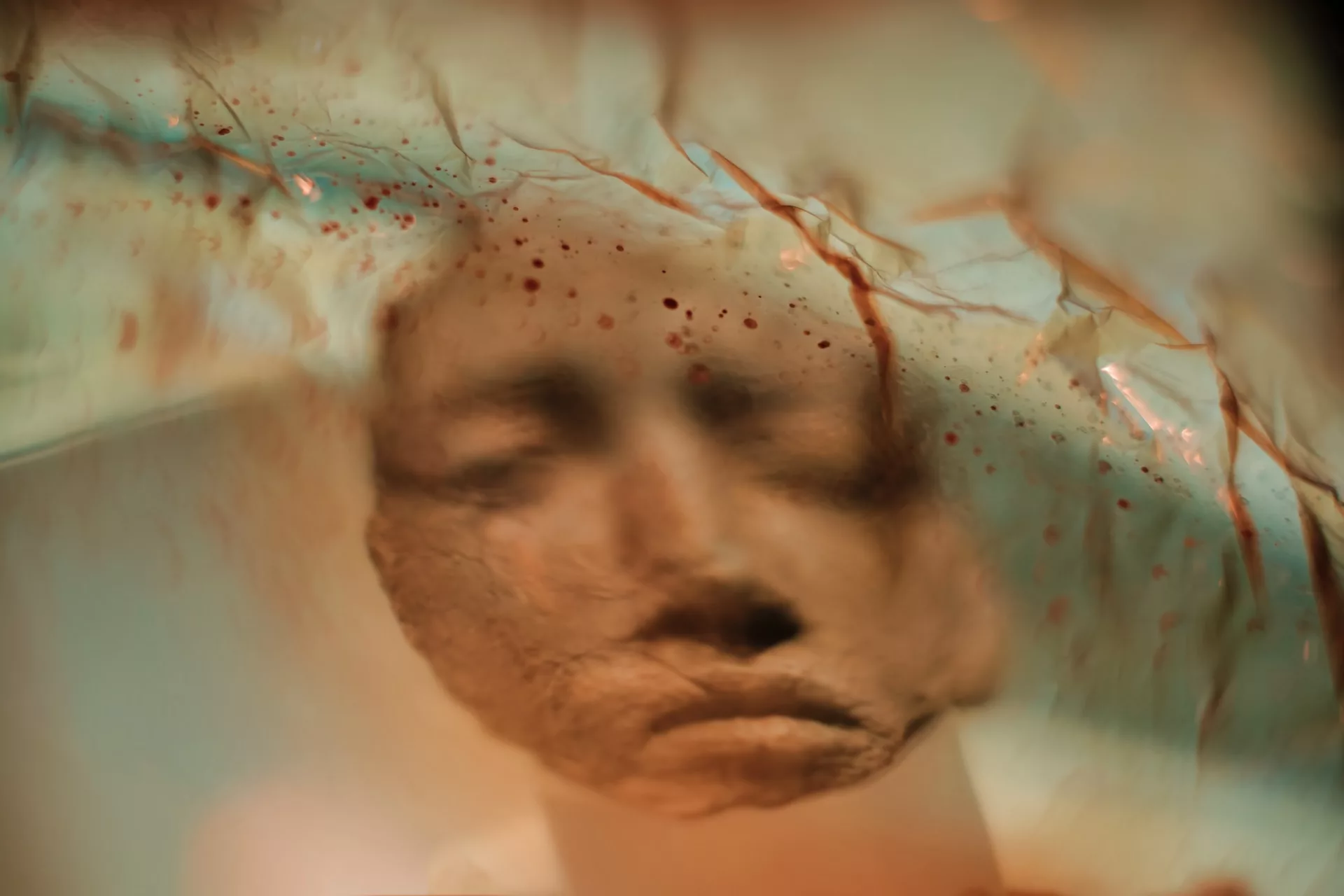Debilitating Capgras delusion syndrome is vastly overlooked. Image credit: Jr Korpa via Unsplash
This article is a part of Brainwaves, a Neuroscience Opinion column written by Leah Fogarty. Explore the rest of the series here.
Imagine the scene: you are alone in your home and your family have been replaced with impostors overnight. You try to tell someone, but no one believes you. What would you do? Unfortunately, this is not just a gripping plot to a thriller movie; it is a nightmarish reality for those suffering from Capgras delusion.
Capgras delusion, also known as Capgras syndrome, is a rare and poorly understood psychiatric condition, characterised as a delusion of doubles, since the impostors are identical duplicates. Capgras delusion is classified as a misidentification syndrome, meaning that the afflicted believes that people, places, or some objects have been replaced. Patients afflicted with Capgras delusion believe that a close friend or family member has been killed and replaced with an impostor. Their belief is so real that no amount of reasoning can correct this illusion, leaving patients feeling unvalidated, frustrated, and frightened. Somewhat understandably, this often leads to aggressive behaviour, putting both the patient and their loved ones in danger.
The horrifying reality is that Capgras can lead to violence. A study found that 6% of Capgras patients have attempted murder, while 38% have engaged in some form of threat or aggression. Despite the urgency of the situation, medical science seems silent. Is it because Capgras is rare or is it simply overlooked? Perhaps researchers are not ready to tackle such a complex disease.
Patients afflicted with Capgras delusion believe that a close friend or family member has been killed and replaced with an impostor.
Delusional disorders are particularly difficult to diagnose and treat due to a lack of patient insight, and Capgras is especially difficult because its cause is so poorly understood. A better understanding of this psychiatric condition is critical to establish an effective, specific treatment, which could prevent the tragic and avoidable breakdown of relationships.
Why Capgras research needs a desperate update
Capgras delusion was first identified by the French psychiatrist Joseph Capgras in 1923 after reports surfaced of a woman who believed her husband was an impostor. This misidentification syndrome was originally believed to be purely a psychiatric disorder and a symptom of schizophrenia. People also believed that only women could experience Capgras delusion, since it was a symptom of female hysteria, a once common medical diagnosis for women, which is no longer recognised as an illness. Various symptoms were associated with female hysteria include dramatic behaviour, blindness, emotional outbursts, and hallucinations. Brain studies in the 1980s confirmed that there was also a neurological component of Capgras delusion, involving brain lesions or atrophy.
Although women are at greater risk of Capgras delusion, this syndrome affects both males and females. Nonetheless, most of the Capgras research focuses on men. To fully understand this disease, research needs to cover both men and women, while uncovering the sex differences in the brain could be key to helping us understand Capgras as well as other delusions.
Neurodegeneration and beyond
Capgras delusion is believed to have both functional and organic origins. Organic origins are clearly identifiable, while functional diseases have no clear origin. Organic psychosis originates from physical brain defects such as lesions or atrophy. By contrast, a patient suffering from functional Capgras delusion, will have a completely healthy-looking brain. The cause in this case is unknown, making it particularly challenging to treat. Using cannabis, hallucinogens, alcohol, and steroids is believed to bring on its symptoms, and since some of these substances are frequently used by the general population, many people could be at risk of developing Capgras. It is therefore vital that the link between the consumption of these compounds and Capgras is established.
A patient suffering from functional Capgras delusion will have a completely healthy-looking brain.
Many neurodegenerative diseases such as schizophrenia, Alzheimer’s disease, Lewy body dementia, and Parkinson’s disease are associated with the onset of Capgras delusion. An estimated 0.12% of the general population has Capgras delusion, rising to 28% of patients with Lewy body dementia. Nonetheless, Capgras delusion is also associated with diabetes, hypothyroidism, and migraine attacks, none of which are caused by neurodegeneration.
Scarily, the reasons and the exact increase in vulnerability underlying this remain unknown. Imagine how many people in the world are therefore afflicted, and how many families are affected as their loved ones suddenly develop symptoms. It is urgent that we find an effective treatment urgently to stop this living nightmare.
Cannabinoid origins?
Studies show that using cannabis increases the risk factor for Capgras delusion. One case study reported a male patient in his 20s with Capgras syndrome, for whom the only identifiable cause of his delusion was cannabis intoxication. This patient was hospitalised harming his parents and trying unsuccessfully to murder his neighbour. Although Capgras syndrome typically affects more females than males, the onset of Capgras delusion after cannabis consumption has primarily been characterised in males between the ages of 17 and 30. This could be because more men of this age group use cannabis than women, or because research has focussed more on men.
Examinations of patients who have developed Capgras delusion after using cannabis show no obvious changes in the structure of their brains. It is unclear how even short-term cannabis consumption can have such drastic effects.
Various studies have shown that cannabis can induce psychosis, and it would be interesting to determine if the association between Capgras delusion and cannabis consumption is related to the relationship between psychosis and cannabis. It is also critical that we prove that cannabis is the cause of Capgras delusion, and not an effect. It is possible that patients with early symptoms of Capgras delusion could understandably be using cannabis to self-medicate, for instance.
Emotional damage
Indian-American neuroscientist Vilayanur Ramachandran was the first to hypothesise in 1995 the neuroanatomical changes present in Capgras delusion. He originally believed that the syndrome could be caused by an inability to connect successive memories due to emotional deficits. Scientists believe that emotion plays a role in the formation of episodic memories, a form of long-term memory involving the conscious recollection of experiences. Capgras patients might therefore be unable to recognise the faces of their family but still feel an unexplainable sense of familiarity in their presence, which may cause them to conclude that their loved ones as impostors.
Personally, I do not think this can be the full story; why would a sense of familiarity alone automatically lead to the assumption that your loved ones are impostors?
Later, Ramachandran alongside American philosopher William Hirstein then suggested in 1997 that patients are still able to recognise faces but have a flawed response to faces due to impaired emotional activity, leading to the feeling that acquaintances are really impostors. Some suggest for instance that Capgras delusion involves a brain injury affecting the connection between the temporal cortex, an area of the brain involved in facial recognition, and the limbic system, which regulates emotional responses.
Patients suffering from Capgras delusion could be unable to monitor or control how they appear to others.
In 2001, Martin Davies, a professor of mental philosophy, and his colleagues expanded upon this hypothesis and suggested that the onset of Capgras delusion relies on two factors. Not only is there a disconnect between the temporal cortex and limbic system, they argued, but there is also a failure to reject the deluded thoughts. Lesions of the frontal lobe result in a lack of ego boundaries and low self-monitoring, suggesting symptoms of Capgras could be caused by frontal lobe dysfunction.
Ego boundaries allow individuals to distinguish between self and non-self, and someone with impaired ego boundaries is unable to identify clearly where their own body and self finish, and where other people, objects, or places begin. Low self-monitoring refers to an inability to reflect on previous behaviour, as well as being unable to adapt behaviour to accommodate different social situations. This means patients suffering from Capgras delusion would be unable to monitor or control how they appear to others.
It is evident that multiple brain areas must be affected to cause both the skewed sense of familiarity and the assumption that your loved ones have been killed and replaced. I think Davies’ two-factor theory makes the most sense, as Capgras patients fail to see their thoughts as deluded. Nonetheless, I do not think it can be the full story.
Front line treatment typically involves therapy for both the patient and those who are seen as impostors.
To me, it is not entirely clear how ego boundaries and low self-monitoring could contribute to Capgras symptoms. Surely impaired ego boundaries would cause a patient to have delusions confusing themselves with their loved ones, rather than the replacement of their loved ones with an impostor. Does low-self monitoring in Capgras mean our natural state, without social pressure, would be to assume our loved ones have been killed and replaced with impostors? It seems unlikely. A closer analysis of the damage to the limbic system or temporal lobe may help to uncover this. For example, I would want to see if there are any differences to the amygdala, a part of the limbic system involved in the processing of fear, since Capgras patients seem to have an unregulated fear response.
Does this horror movie have a happy ending?
While the theories are logical, research on Capgras is shockingly behind other disorders of the brain. The majority of research has been conducted post-mortem, meaning there is no concrete evidence to support these theories. Although post-mortem studies can show brain damage, they are not the most useful. This is because they do not directly show which lesions cause which symptoms, we can only make assumptions.
Capgras syndrome also often co-exists with other neurological conditions, making it unclear to know which lesions are causing what symptoms. It has never been confirmed whether the brain atrophy seen in Capgras delusion patients is a cause or an effect of the syndrome. Perhaps further studies in living patients could help identify the brain areas affected in Capgras.
Currently, there is no standardised treatment for Capgras delusion. Front line treatment typically involves therapy for both the patient and those who are seen as impostors. Drug prescription differs between patients but often involves the use of antipsychotic medications or antidepressants. Nonetheless, there is no current cure for Capgras delusion and patients often relapse if they recover at all.
It is clear that Capgras delusion is a disabling syndrome with potentially devastating effects. For effective treatment, a better understanding of the disease is required. Research should focus on comparing functional and organic cases of Capgras delusion to try and find the missing link. Furthermore, we need more research comparing male and female patients, as well as links to cannabis, neurodegeneration, and other diseases positively correlated with the onset of Capgras. Only once the true cause of Capgras syndrome has been identified, can specialist, standardised treatment be designed and created to treat this mysterious disorder.





